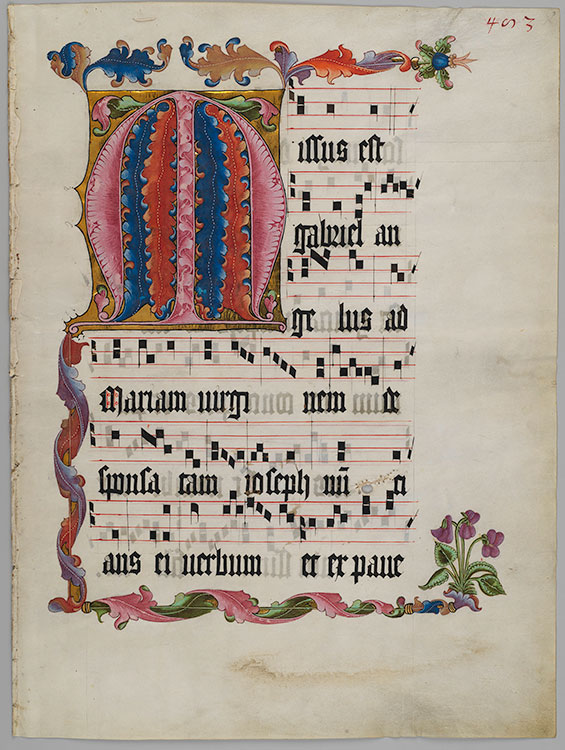
MAINZ: ECCLESIASTICAL CAPITAL AND CRADLE OF PRINTING
Although little is known about its original context, this leaf once formed part of an antiphonary—a collection of chants—nearly identical to a set of choir books created around 1432 for the Carmelite monastery at Mainz. Those books were commissioned by Johannes Fabri, the son of a goldsmith and stepson of a butcher, who likely donated the set to mark his admission to the monastery, where he would eventually become prior. Instructions for creating the twisting, multicolored vine-scroll ornament survive in contemporary model books used by professional painters. Marking the beginning of a feast in Advent, the large initial M and its foliate decoration showcase exactly what the new technology of printing was not capable of doing.
Leaf from an Antiphonary, in Latin
Germany, Mainz, ca. 1430–50
Metropolitan Museum of Art, New York
Gift of Miss Alice M. Dike, in memory of her father, Henry A. Dike, 1928.225.2
